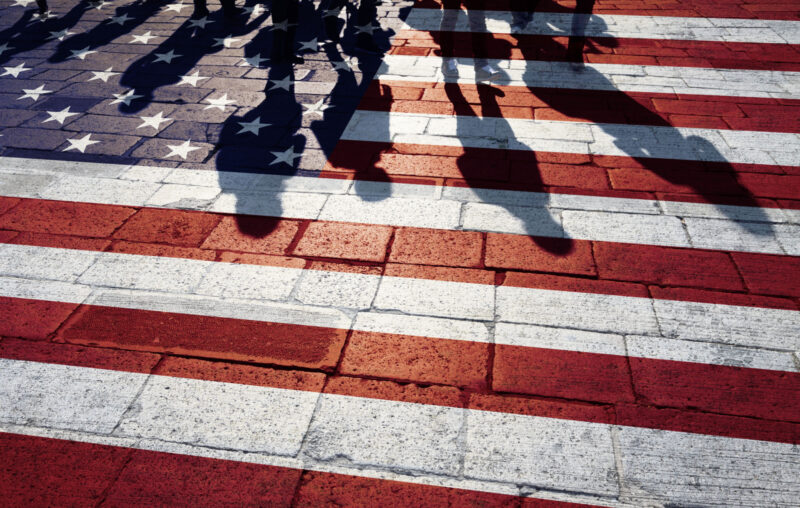Immigration Can Ease America’s Labor Shortage

In what many have dubbed “The Great Resignation,” millions of workers have quit the labor force, creating one of the biggest labor shortages in American history. By December 2021, three percent of the labor force had quit, which was the highest quit rate ever recorded by the Bureau of Labor Statistics. Many Americans cited low pay, lack of upward mobility, and feeling disrespected at work as reasons for seeking new employment, or quitting the labor force entirely. Whatever the reason, employers are scrambling to find workers. As the pandemic waned, people realized the severity of the labor shortage: from canceled flights and delayed deliveries to business closures and naked grocery shelves.
If American natives have decided to leave the labor force, why not allow more immigrants to fill their places? Indeed, that’s exactly what businesses have been advocating, including upping the cap on employment visas and simplifying the visa-renewal process.
Currently, there are over nine million qualified immigrants waiting for their tickets into the United States. Eliminating administrative delays and increasing visa caps would drastically improve our economic malaise by alleviating the labor shortage and stemming the tide of future recession. Without more immigrants, businesses starving for workers will remain in dire economic straits.
Mark Krikorian of the Center for Immigration Studies argues that, contrary to popular reports, there is no shortage of immigrant workers. He shows that the total number of immigrant workers in the US is greater than pre-pandemic levels. Although true, this figure doesn’t account for the flow of immigrants. Last year, there was a slight uptick in the total number of visas issued, but that number still stands below pre-pandemic levels.
Krikorian is right in saying that much of the labor shortage can be attributed to “the decades-long decline in the labor force participation rate,” but that overlooks the potential for more immigrants to ease labor shortage conditions, while also tackling the deeper social woes afflicting the more than six million prime-age men who have exited the American labor force.
We can — and should — offer ways to draw these domestic workers back into the American economy without casting aside the vast reservoir of immigrant workers awaiting their chance at a new life. As is well documented, welcoming more immigrants doesn’t significantly depress the wages of native-born Americans. In some cases, increasing immigration can boost native wages, even for low-skilled workers, because immigrants often complement the work of their native counterparts.
This unfilled labor shortage not only leaves immigrants on the outside looking in, it also deprives American citizens of workers whose presence would lighten their economic burden by increasing the supply of goods and lowering prices on everyday items, from grocery expenses to life-saving medical care.
One study observes that increases in low-skilled immigration reduce prices for immigrant-intensive goods and services such as produce farming, housekeeping, and gardening. And it’s not just low-skilled immigration that could ease the labor shortage. One recent report finds that the demand for high-skilled foreign labor rose during the pandemic. For computer-related occupations, like systems engineers and software analysts, demand soared and has remained high since.
Each year in the US, only 85,000 H-1B visas are granted to highly trained foreign workers seeking temporary employment. In 2021, employers submitted over 300,000 H-1B visa applications, representing a massive demand for high-skilled labor that’s not being tapped by the pool of domestic workers. Increasing this cap and easing the application process would spur productivity growth in America’s high-tech industries.
During the height of the pandemic in the US, when healthcare professionals were most needed, licensing and visa restrictions barred many legal immigrants from offering urgent medical services. According to the Migration Policy Institute, there are 263,000 immigrants with a healthcare degree who are being underutilized. Lifting these regulatory burdens, for example, could have greatly swelled the ranks of nurses, contact tracers, and physician assistants performing vital medical care during the pandemic. In underserved communities, where immigrants are most likely to reside, the benefits to removing these barriers are even higher.
Policy improvements are being made in states across the country. For example, the Idaho Medical Practice Act, passed in 2016 but officially invoked in 2020, permits workers licensed in another state or country to render medical care during times of emergencies. Pennsylvania is also a trailblazer in this area. Since 2020 Pennsylvania has allowed medical professionals with licenses issued outside of the US to offer crucial support via telemedicine. Other states are catching on, indicating an appetite among policymakers to remove restrictions that are impeding potential workers — many of them immigrants — from contributing unmet supply in the area where it’s urgently felt: healthcare.
In his book, Immigration and Freedom, Chandran Kukathas explains that immigration restrictions foster a system of foreign and domestic control. In other words, erecting arbitrary immigration barriers limit the freedom of American citizens to engage in choices that would benefit themselves, and the immigrants with whom they interact. “The guns face inwards more than they face out,” writes Kukathas, “and the guards are to be found not merely well within the boundaries of the state but in every part of society.”
Our broken immigration system severely weakens the American economy. The labor shortage that emerged following the pandemic demonstrates the fragility of immigration restrictions and the economy-wide consequences that we all face when we turn away willing workers. By increasing visa caps and streamlining the application process, not only can we alleviate much of the labor shortage, but we can also uplift the American economy and the spirit that drives it.
When describing our efforts to seal off our world from those wishing to take part in it, even if for a moment, Kukathas hits a familiar chord: “As we have tried to erect a fortress, so have we managed to build a prison.” Instead of a prison, let’s build a bridge.










